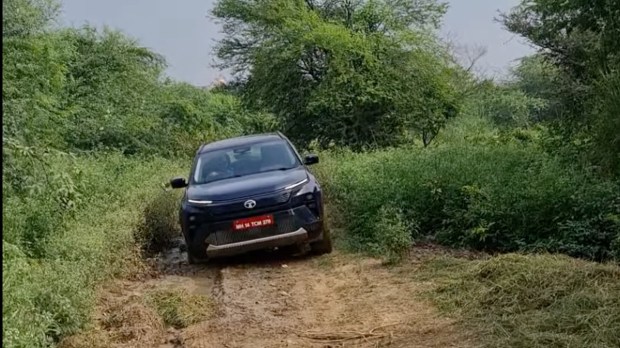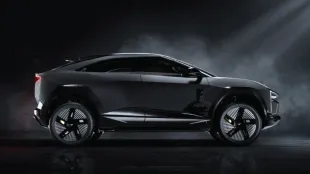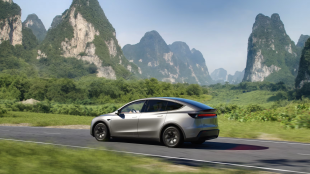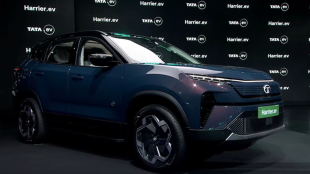It is safe to assume that the Tata Harrier EV is a massive hit among the buyers. The waiting period of the mid-size electric SUV has soared up to 30 weeks for select variants. The Harrier EV is available in five broad trims namely Adventure, Adventure S, Fearless Plus, Empowered, and Empowered AWD, that are further divided into two battery options: 65 kWh and 75 kWh.
An unconfirmed post by Motor Arena India on X (formerly Twitter) claims that the Adventure S trim with the 65 kWh battery pack has a waiting period between 28 and 30 weeks. The other variants with the smaller 65 kWh battery have a waiting period anything between 18 and 21 weeks. On the other hand, all variants with the 75 kWh battery come with a waiting period of 12-15 weeks.

| Persona (RWD) | Price (All prices are ex-showroom, pan-India) |
| Adventure 65 | Rs 21.49 Lakh |
| Adventure S 65 | Rs 21.99 Lakh |
| Fearless+ 65 | Rs 23.99 Lakh |
| Fearless+ 75 | Rs 24.99 Lakh |
| Empowered 75 | Rs 27.49 Lakh |
| Empowered 75 QWD | Rs 28.99 Lakh |
Besides attractive prices, Tata Harrier EV is loaded to the gills with modern features. In addition, Tata is offering two battery-pack options along with two drivetrain choices: rear-wheel drive and all-wheel drive, with the Harrier EV. For prospective buyers, long waiting periods could be a real deterrent. Let us find out if you should wait for the Tata Harrier EV by discussing its Pros and Cons briefly.

Tata Harrier EV: Pros
- Dual‑Motor AWD Performance: The top-spec QWD variant uses a powerful dual‑motor layout (front induction + rear permanent‑magnet), delivering ~313 PS and 502–504 Nm torque. It can sprint from 0–100 km/h in roughly 6.3 seconds, providing strong and balanced acceleration
- Segment‑Best Feature Loadout: Packed with premium tech: 14.5″ Neo QLED infotainment, 10‑speaker JBL Black audio with Dolby Atmos, digital rearview mirror with built‑in recorder, Level‑2 ADAS, summon/remote‑park, panoramic sunroof, electric and ventilated front seats with memory, and more.
- Exceptional Ride Comfort and Off‑Road Capability: Equipped with independent multi‑link suspension and frequency‑dependent dampers, the ride is smooth across diverse terrain. With six terrain modes (Sand, Snow/Grass, Mud‑Ruts, Rock Crawl, Custom), 205 mm ground clearance, and solid traction, it handles off‑road conditions confidently.
- Long Range and Fast Charging: The 75 kWh battery delivers a claimed MIDC range up to 622 km, with real‑world expectations between 430–490 km. Supports 120 kW DC fast charging (20–80% in ~25 minutes).
- Competitive Pricing and Safety: The Harrier EV undercuts rivals like the Mahindra XEV 9e and BYD Atto 3 in pricing while offering more features. It also earned a 5‑star Bharat NCAP safety rating for its variant range.
Tata Harrier EV: Cons
- Limited Boot Capacity & Raised Floor: Higher floor to accommodate the battery reduces usable boot space (~405 litres) and compromises under‑thigh support for taller passengers, especially due to rear-seat height.
- Electronic Reliability Concerns: During media testing, several units experienced software glitches—infotainment screens going blank, erratic warning lights, and camera display resets—raising questions about long‑term reliability.
- Spongy Brake Pedal Feel: Despite 4‑level regen braking controlled via paddle shifters, the hydraulic brake feedback feels soft and requires more pedal travel than expected for the vehicle’s mass.
- Lack of “Wow” Factor in Exterior Design: The styling remains very similar to the ICE Harrier, with minor differences like a closed grille and new alloys, and doesn’t stand out compared to more distinctive competitors.
- Scarce High‑Speed Charging Infrastructure: While capable of fast charging, the lack of widespread 120 kW+ public chargers limits practical benefit, particularly in less urban settings.




















